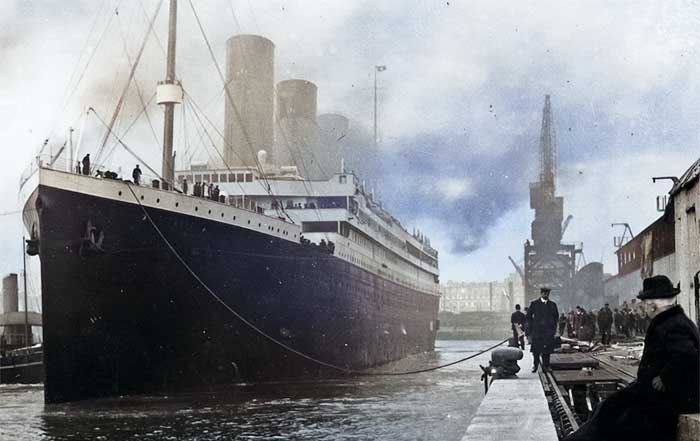The RMS Titanic story is a legendary story- it has been told and retold countless times. It is among the most famous and tragic stories in history; today, the magnificent ship’s legacy lives on. The RMS Titanic was an architectural masterpiece that captivated the world when it first set sail in 1912. The sheer size and grandeur of the ship was an engineering marvel, with its nine decks and two grand staircases. It had state-of-the-art facilities such as a swimming pool, Turkish baths, electric elevators and even a squash court. Titanic was designed to be luxurious and comfortable for its passengers to enjoy their voyage in style. Yes, Titanic was much more than just a ship- it was an architectural masterpiece.
The huge ship featured lavish first-class cabins with private bathrooms and luxurious amenities like mahogany furniture. Its opulent dining saloons were designed to impress even the most discerning traveller with its ornate decor and fine cuisine. Titanic is remembered not only for its tragic end but also for its exquisite architecture. Its grandeur has been immortalized in film, literature, art, music and popular culture ever since it set sail on its fateful voyage over a century ago. Titanic is one of the most iconic ships in history, and it was also an architectural masterpiece. In its day, it was the largest ship afloat- its design was a marvel of the era.
From its grand staircase to its luxurious cabins, Titanic was an engineering and aesthetic triumph. The magnificent behemoth was built in Belfast, Ireland, in 1912. The ship was 882 feet in length and 92 feet in height. It had nine decks, four of which were above the waterline. There were a total of 2,208 people onboard the Titanic, including crew and passengers. The ship was constructed with a steel frame and featured a double bottom and double hull. This made it more buoyant and less likely to sink. The exterior was painted white, and the hull was fitted with a combination of rivets and bolts. This design provided the ship with strength and stability.
The ship was equipped with a system of watertight compartments that were designed to keep it afloat in the event of an accident or disaster. This system allowed the Titanic to remain afloat for a short period of time, even after it was struck by an iceberg. Titanic also featured an impressive array of amenities. There were two grand staircases, one on either side of the ship, and five luxurious dining salons. The first-class cabins were extremely luxurious; some even had their own private promenade decks.
Titanic was an engineering marvel and architectural masterpiece. The ship's designers paid close attention to detail to create a vessel that was both beautiful and functional. Titanic was a wonder to behold and a reminder of the grandeur of the Gilded Age. Titanic's legacy lives on today as a reminder of the incredible engineering and architecture of its era. Its grand staircase and luxurious cabins will always stand as a testament to the skill and creativity of its designers. Titanic will be remembered as one of the most famous ships in history.
Titanic was one of the first ocean liners that were large enough to make transatlantic crossings. It was an impressive engineering feat, with a hull made from the strongest steel available and a unique double-hull design that made it extremely buoyant. Actually, at 882.5 feet in length, Titanic was, perhaps, the largest passenger ship of its time; its sheer size was a testament to its grandeur.
Titanic also boasted some of the most advanced technology of its day. It was equipped with state-of-the-art safety features, like watertight compartments and lifeboats, as well as the latest navigation and communication equipment. It was also decorated with ornate interior design, including ornamental staircases, grand salons and luxurious cabins. Titanic was a true work of art- its design was a reflection of the wealth and opulence of its time. It was a symbol of prestige, of the power of human ingenuity, and of man's ability to overcome the limits of nature. Titanic may have ultimately ended in tragedy, but its legacy as an architectural masterpiece remains.
Today, Titanic is remembered for its grandeur and beauty- its impact on the world of architecture can still be seen in modern-day ships and buildings. While it was a symbol of strength, its legacy of innovation and ingenuity will continue to inspire generations to come.

